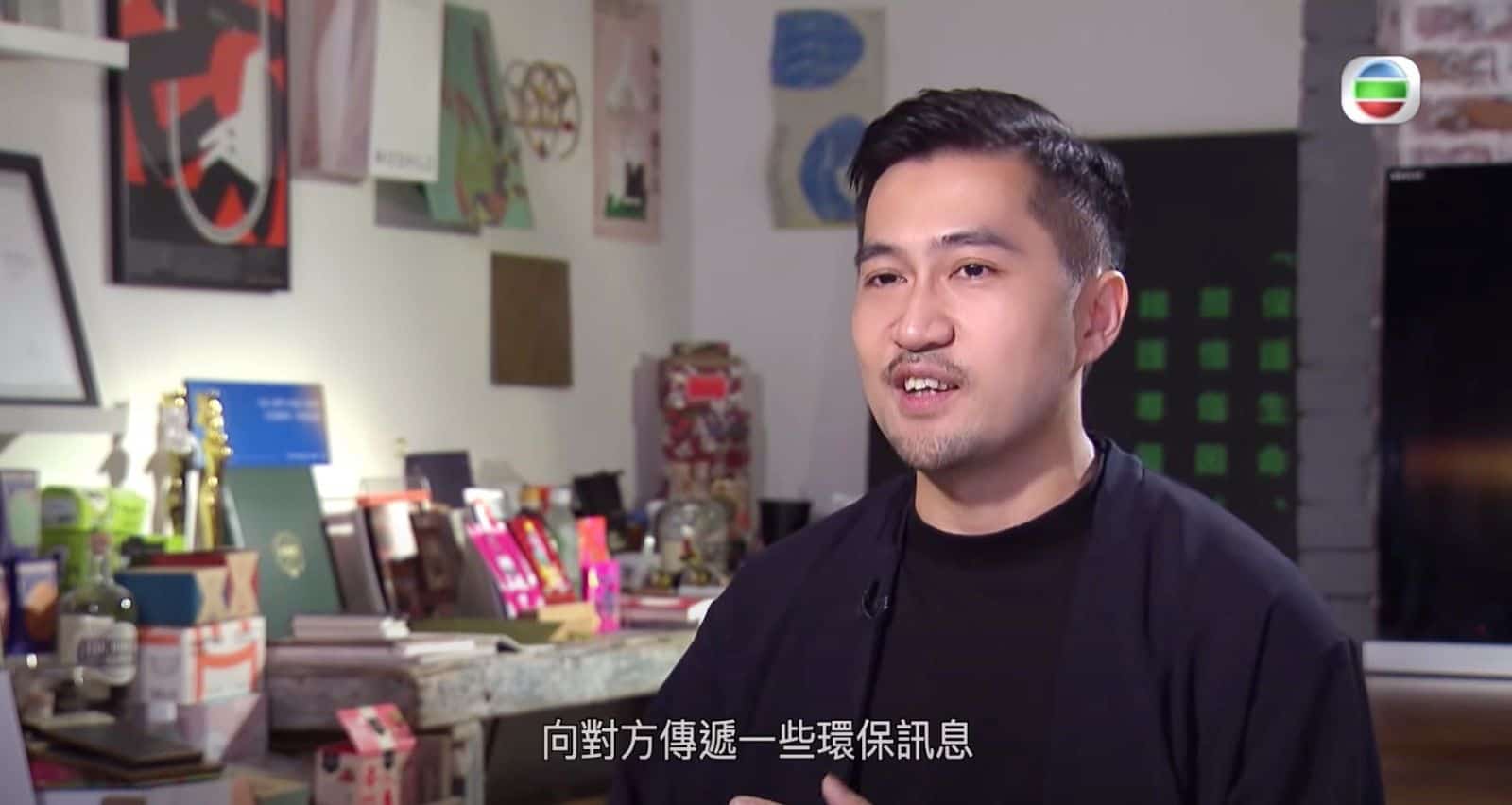Upon the passage of the Municipal Solid Waste Charging Scheme, Vince Cheung was invited to the Sunday Report TV documentary to share his views on waste disposal as a brand designer. In the show, Cheung specified that the social responsibility of brand designers is to remind corporates of the importance of incorporating environmentally friendly concepts in the early development of the brand. He also suggested four feasible solutions in producing eco-packages, and emphasized the reciprocal relationship between the public and the market.
As a brand designer, Cheung trusts that his title carries the critical responsibility of leading in the development and creation of a branding. From his experience, Cheung recalled that brands were sometimes oblivious of the great social responsibility they bore and the imminent need of being green in their brand image and in the products they offered. Brand designers thus have the obligation to remind brands of the positive influence they can make, and help brands search for the resources and solutions necessary to bring the influences to life.
Regarding ways to bring eco-friendly solutions to life, Cheung shared four practical and feasible actions that can be achieved with the packaging of products. Starting with materials, Cheung recommended the use of sustainable, non-toxic, recyclable, and compostable elements. To further enhance the sustainability of packages, he suggested that functionality and re-usability of packages should be considered when designing the packaging. Cheung drew reference to his past design in which he gave mooncake packages a second life to become an exceptional photo frame. Cheung’s third advice concerns the space within the package, which too plays a role in constituting an eco-package. Spacey packages should be avoided as the utilization of the internal space is not only more eco-friendly but also reduces the production cost for corporates. Lastly, although often ignored, Cheung revealed that the weight of the package should also be considered. Weight comes primarily from its texture. However, the heavier the packages are, the more they add to the air pollution during land and air freight transports. Therefore, striking a balance between texture and being mindful of the environment can be a more eco-friendly solution for packages.
Although it seems like much of the responsibility lands on the shoulders of the corporates, Cheung highlighted the power the public has in motivating corporates to opt for greener alternatives. Corporates sometimes set back from being sustainable due to constraints in aesthetics, patents, and traditions. Cheung, therefore, believes the power of public education could help enhance social awareness on environmental protection, which in return, the altered consumer demand from the increased awareness could act as inertia to motivate innovations and sustainability in corporates. Together, corporates and the public form a reciprocal relationship: corporates promote sustainability to the public with their packages and brand missions while the public motivates and supports corporates to be more eco-friendly.
In short, Cheung leveraged the opportunity to share on Sunday Report to validate the crucial role of brand designers in encouraging corporates of an environmentally-friendly brand image and proposed means to facilitate the production of eco-packages. Most importantly, Cheung wanted to remind everyone of the shared responsibility they shoulder to preserve the environment. Many a little makes a mickle, don’t you agree?
